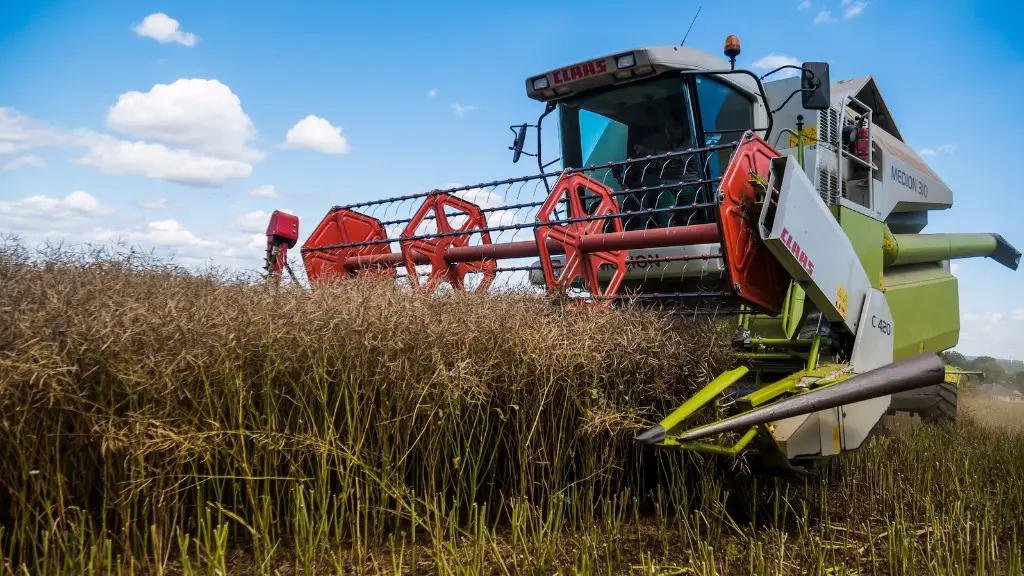Capital formation in agriculture is an integral part of developing and growing an agricultural business. It involves both physical and financial inputs to build, maintain, and expand the business. Physical inputs, such as tools, land, and buildings, are tangible assets that can be used to generate revenue. Financial inputs, such as loans, grants, and investments, are intangible assets that can provide funds for purchase of equipment, stock, and other operating costs. Capital formation is essential for farmers to improve efficiency and productivity, and to stay ahead of the competition.
Capital formation often begins with investment. Investors might provide funds for purchasing land and equipment, building nests, and investing in stocks and shares. They may also provide loans to farmers for their operational costs. Loans are typically repaid with interest and can be unsecured or secured. Grants are often provided by governments and other organizations to assist farmers in capital formation. These grants can be used to acquire fixed assets, expand operations, or reduce operational costs.
One of the key aspects of capital formation in agriculture is knowledge and understanding of the business operations. A farmer must have a good understanding of the agricultural sector and know what products and services will be needed to maximize production and efficiency. Farmers should also have a good record of financial data, such as income and expenses, to demonstrate their ability to manage the business and repay any debts.
Once a farmer has sufficient capital, they will need to create a business plan to guide their day to day operations. This will include analyzing the market, estimating costs, and setting goals. Effective management is key to achieving these goals and keeping the business profitable. A business plan also helps farmers seek funding from banks, investors, and other sources to expand operations further.
Finally, technology is another key element of capital formation in agriculture. Modern agriculture requires advanced technology to optimize yields and increase efficiency. This can include genetic engineering, GPS technology, automated irrigation systems, and modern farming equipment. The ability to use and understand technology is essential for a successful agricultural business.
Loans and Grants
Loans and grants are two major sources of capital formation in agriculture. Secured loans are typically taken out with a bank or other lender and use the collateral of a farmer’s assets or other property. Unsecured loans are typically provided by private investors, and offer more flexibility, but may come with higher interest rates. When seeking a loan, it is important for farmers to understand the loan terms and make sure that monthly repayments are manageable.
Grants are usually offered by government or non-governmental organizations to assist farmers in capital formation. These are typically provided on the basis of need, and may cover acquisition of fixed assets, expansion of operations, or reduction of operational costs. This funding can provide much needed support for farmers and can help create the foundation for a thriving business.
It is important to carefully consider and research the loan and grant options available before deciding on a course of action. This can help to maximize the impact of the capital formation and achieve the desired outcomes. As with any business venture, there are risks associated with taking out a loan or grant and it is important to consider these before proceeding.
Marketing and Social Media
In addition to financial inputs, farmers need to consider their marketing and social media strategy when it comes to capital formation in agriculture. With the increasing digitization of the agricultural market, an effective and efficient way of reaching the right target market is key to gaining a competitive advantage. This can involve desigining and maintaining a website, advertising on social media, e-mail marketing, and other digital marketing channels.
Social media can be a powerful tool for spreading awareness about a farm operation and engaging with customers. Platforms such as Facebook and Twitter can be used to advertise special offers and discounts, or share updates on the state of the farm. Engagement with followers builds relationships, trust and loyalty, and can encourage repeat business. It is important to keep in mind that customers should always be treated with respect, and to avoid posting any information that could be seen as offensive or unprofessional.
Understanding the value of social media is essential for capital formation in agriculture. Farmers should consider investing in staff or outsourced digital marketing professionals to ensure that any strategies are executed properly. This can help to take the business to the next level and capitalize on the opportunities available through digital channels.
Risk Management
Risk management is another essential part of building capital in agriculture. Businesses must understand their risks such as climate change, pests, diseases, fluctuating commodity prices, and uncertain markets. Identifying and assessing these risks is essential for making informed decisions and managing operations. Regular audits can reveal blind spots and help to identify areas where improvements are needed. Setting up an insurance policy can also provide financial protection in case of adverse situations.
Risk management is also important for reducing operational costs. With the right information and understanding of intrinsic risks, farmers can identify the best time to acquire inputs, hire staff, and acquire new equipment. This knowledge can be used to set budgets and plan expenditure accordingly, and can ultimately reduce costs over time.
Overall, there are numerous factors that need to be considered when it comes to capital formation in agriculture. From financial inputs and strategic marketing, to risk management and technology, careful planning and preparation is essential for achieving the desired results. Proper planning can help to ensure the success of a farm business and open up new opportunities for growth.
Technological Solutions
Technology is key for capital formation in agriculture and can provide significant improvements in efficiency, production, and quality. Businesses can invest in automated irrigation systems, virtual reality simulations, sensors, drones, and other smart farm technologies. This can help to reduce labour costs, optimize inputs and resources, and enable better decision making, which can result in increased profits for the business.
It is important to consider the costs associated with technology investments as well as the potential impact on the environment and surrounding community. Farmers must make sure that they understand the possible consequences and obtain the necessary permits, licenses, and regulations before proceeding. Smart farm technology can provide cost savings and improved yields, but there may also be hidden costs and long-term impacts that must be taken into account.
When it comes to technology, there is no one-size-fits-all solution, as different businesses have different needs. Farmers will need to take the time to research and identify the technologies that are best suited to their specific needs and budget. A combination of informed decision making and strategic investments in technology can pay dividends in the long run and create a more dynamic and successful agricultural business.
Professional Development
Professional development is another essential aspect of capital formation in agriculture. Businesses should invest in learning and development and create opportunities for employees to evolve with the business. This can involve attending conferences, workshops, and seminars, or taking courses on areas such as financial management, customer service, and marketing.
In addition to training and education, businesses can provide incentives such as rewards, bonuses, and recognition to employees in order to retain the best people and keep morale high. Offering professional development opportunities can also increase employee engagement and drive a positive culture within the business.
Businesses should also foster learning and growth within the organization, by creating an environment where ideas and experiences are shared freely and new ideas can be tried and tested. This collaborative environment encourages innovation and can help to drive the business forward.
Finally, investing in education can also help to ensure that businesses remain competitive and keep up with the latest developments in the industry, both in terms of technology and regulations. Understanding industry trends, practices, and innovations, can enable farmers and their employees to gain a competitive advantage and remain ahead of the competition.





